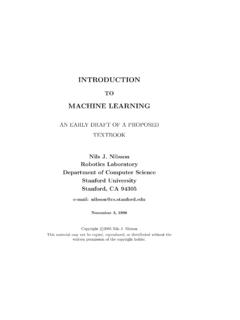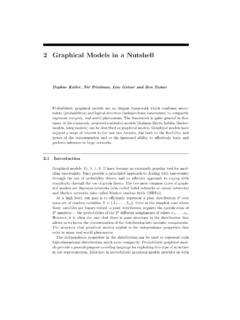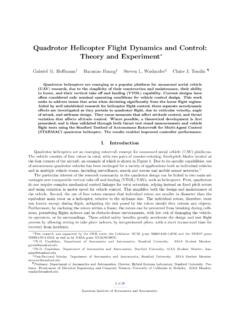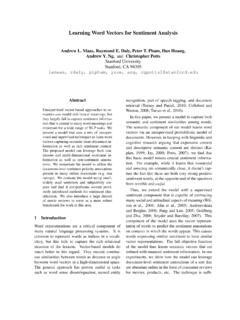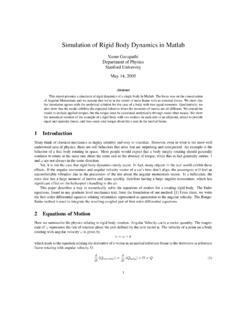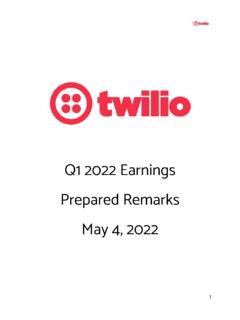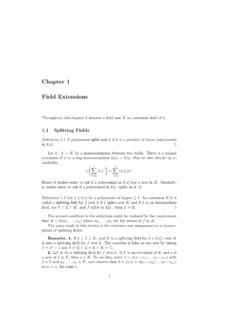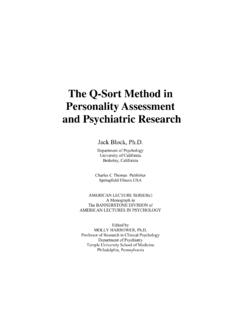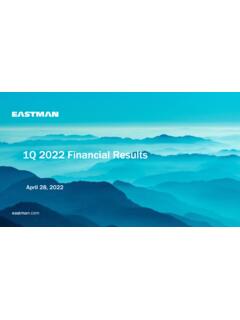Transcription of INTRODUCTION MACHINE LEARNING - Stanford University
1 INTRODUCTION . TO. MACHINE LEARNING . AN EARLY DRAFT OF A PROPOSED. TEXTBOOK. Nils J. Nilsson Robotics Laboratory Department of Computer Science Stanford University Stanford , CA 94305. e-mail: November 3, 1998. Copyright 2005. c Nils J. Nilsson This material may not be copied, reproduced, or distributed without the written permission of the copyright holder. ii Contents 1 Preliminaries 1. INTRODUCTION .. 1. What is MACHINE LEARNING ? .. 1. Wellsprings of MACHINE LEARNING .. 3. Varieties of MACHINE LEARNING .. 4. LEARNING Input-Output Functions .. 5. Types of LEARNING .. 5. Input Vectors .. 7. Outputs .. 8. Training Regimes .. 8. Noise .. 9. Performance Evaluation .. 9. LEARNING Requires Bias.
2 9. Sample Applications .. 11. Sources .. 13. Bibliographical and Historical Remarks .. 13. 2 Boolean Functions 15. Representation .. 15. Boolean Algebra .. 15. Diagrammatic Representations .. 16. Classes of Boolean Functions .. 17. Terms and Clauses .. 17. DNF Functions .. 18. CNF Functions .. 21. Decision Lists .. 22. Symmetric and Voting Functions .. 23. Linearly Separable Functions .. 23. Summary .. 24. Bibliographical and Historical Remarks .. 25. iii 3 Using Version Spaces for LEARNING 27. Version Spaces and Mistake Bounds .. 27. Version Graphs .. 29. LEARNING as Search of a Version Space .. 32. The Candidate Elimination Method .. 32. Bibliographical and Historical Remarks .. 34.
3 4 Neural Networks 35. Threshold Logic Units .. 35. Definitions and Geometry .. 35. Special Cases of Linearly Separable Functions .. 37. Error-Correction Training of a TLU .. 38. Weight Space .. 40. The Widrow-Hoff Procedure .. 42. Training a TLU on Non-Linearly-Separable Training Sets 44. Linear Machines .. 44. Networks of TLUs .. 46. Motivation and Examples .. 46. Madalines .. 49. Piecewise Linear Machines .. 50. Cascade Networks .. 51. Training Feedforward Networks by Backpropagation .. 52. Notation .. 52. The Backpropagation Method .. 53. Computing Weight Changes in the Final Layer .. 56. Computing Changes to the Weights in Intermediate Layers 58. Variations on Backprop .. 59. An Application: Steering a Van.
4 60. Synergies Between Neural Network and Knowledge-Based Methods 61. Bibliographical and Historical Remarks .. 61. 5 Statistical LEARNING 63. Using Statistical Decision Theory .. 63. Background and General Method .. 63. Gaussian (or Normal) Distributions .. 65. Conditionally Independent Binary Components .. 68. LEARNING Belief Networks .. 70. Nearest-Neighbor Methods .. 70. Bibliographical and Historical Remarks .. 72. iv 6 Decision Trees 73. Definitions .. 73. Supervised LEARNING of Univariate Decision Trees .. 74. Selecting the Type of Test .. 75. Using Uncertainty Reduction to Select Tests .. 75. Non-Binary Attributes .. 79. Networks Equivalent to Decision Trees .. 79. Overfitting and Evaluation.
5 80. Overfitting .. 80. Validation Methods .. 81. Avoiding Overfitting in Decision Trees .. 82. Minimum-Description Length Methods .. 83. Noise in Data .. 84. The Problem of Replicated Subtrees .. 84. The Problem of Missing Attributes .. 86. Comparisons .. 86. Bibliographical and Historical Remarks .. 87. 7 Inductive Logic Programming 89. Notation and Definitions .. 90. A Generic ILP Algorithm .. 91. An Example .. 94. Inducing Recursive Programs .. 98. Choosing Literals to Add .. 100. Relationships Between ILP and Decision Tree Induction .. 101. Bibliographical and Historical Remarks .. 104. 8 Computational LEARNING Theory 107. Notation and Assumptions for PAC LEARNING Theory .. 107. PAC LEARNING .
6 109. The Fundamental Theorem .. 109. Examples .. 111. Some Properly PAC-Learnable Classes .. 112. The Vapnik-Chervonenkis Dimension .. 113. Linear Dichotomies .. 113. Capacity .. 115. A More General Capacity Result .. 116. Some Facts and Speculations About the VC Dimension . 117. VC Dimension and PAC LEARNING .. 118. Bibliographical and Historical Remarks .. 118. v 9 Unsupervised LEARNING 119. What is Unsupervised LEARNING ? .. 119. Clustering Methods .. 120. A Method Based on Euclidean Distance .. 120. A Method Based on Probabilities .. 124. Hierarchical Clustering Methods .. 125. A Method Based on Euclidean Distance .. 125. A Method Based on Probabilities .. 126. Bibliographical and Historical Remarks.
7 130. 10 Temporal-Difference LEARNING 131. Temporal Patterns and Prediction Problems .. 131. Supervised and Temporal-Difference Methods .. 131. Incremental Computation of the ( W)i .. 134. An Experiment with TD Methods .. 135. Theoretical Results .. 138. Intra-Sequence Weight Updating .. 138. An Example Application: TD-gammon .. 140. Bibliographical and Historical Remarks .. 141. 11 Delayed-Reinforcement LEARNING 143. The General Problem .. 143. An Example .. 144. Temporal Discounting and Optimal Policies .. 145. Q- LEARNING .. 147. Discussion, Limitations, and Extensions of Q- LEARNING .. 150. An Illustrative Example .. 150. Using Random Actions .. 152. Generalizing Over Inputs .. 153. Partially Observable States.
8 154. Scaling Problems .. 154. Bibliographical and Historical Remarks .. 155. vi 12 Explanation-Based LEARNING 157. Deductive LEARNING .. 157. Domain Theories .. 158. An Example .. 159. Evaluable Predicates .. 162. More General Proofs .. 164. Utility of EBL .. 164. Applications .. 164. Macro-Operators in Planning .. 164. LEARNING Search Control Knowledge .. 167. Bibliographical and Historical Remarks .. 168. vii viii Preface These notes are in the process of becoming a textbook. The process is quite unfinished, and the author solicits corrections, criticisms, and suggestions from students and other readers. Although I have tried to eliminate errors, some un- doubtedly remain caveat lector.
9 Many typographical infelicities will no doubt persist until the final version. More material has yet to be added. Please let Some of my plans for additions and other reminders are mentioned in me have your suggestions about topics that are too important to be left out. marginal notes. I hope that future versions will cover Hopfield nets, Elman nets and other re- current nets, radial basis functions, grammar and automata LEARNING , genetic algorithms, and Bayes networks .. I am also collecting exercises and project suggestions which will appear in future versions. My intention is to pursue a middle ground between a theoretical textbook and one that focusses on applications. The book concentrates on the important ideas in MACHINE LEARNING .
10 I do not give proofs of many of the theorems that I. state, but I do give plausibility arguments and citations to formal proofs. And, I. do not treat many matters that would be of practical importance in applications;. the book is not a handbook of MACHINE LEARNING practice. Instead, my goal is to give the reader sufficient preparation to make the extensive literature on MACHINE LEARNING accessible. Students in my Stanford courses on MACHINE LEARNING have already made several useful suggestions, as have my colleague, Pat Langley, and my teaching assistants, Ron Kohavi, Karl Pfleger, Robert Allen, and Lise Getoor. ix Chapter 1. Preliminaries INTRODUCTION What is MACHINE LEARNING ? LEARNING , like intelligence, covers such a broad range of processes that it is dif- ficult to define precisely.
